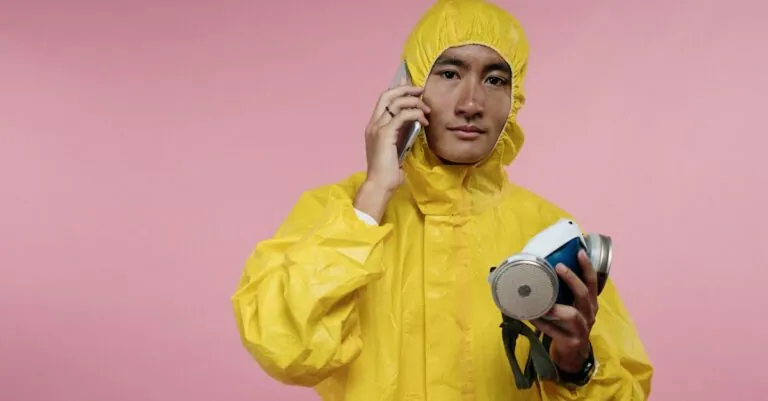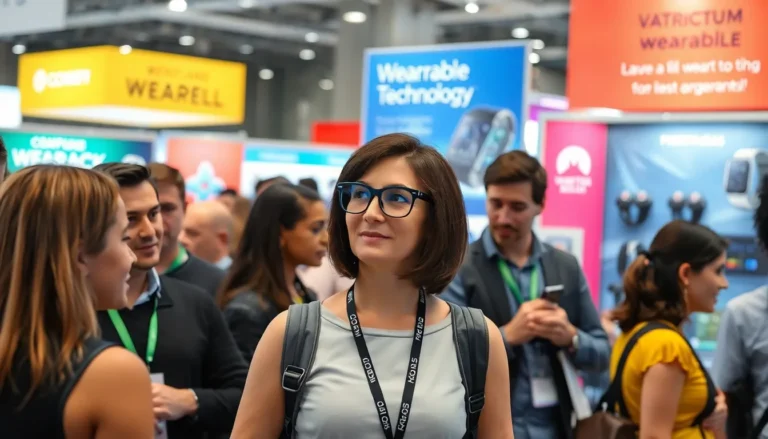In a world where fashion meets function, wearable tech fashion is strutting down the runway of innovation. Imagine strapping on a smartwatch that not only tells the time but also tracks your steps, monitors your heart rate, and lets you know when it’s time to stop binge-watching your favorite series. It’s like having a personal assistant on your wrist, minus the awkward small talk.
Table of Contents
ToggleOverview Of Wearable Tech Fashion
Wearable tech fashion merges technology with style, creating innovative products that enhance everyday life. Smartwatches exemplify this trend, providing functionality while serving as fashion accessories. Users appreciate features such as fitness tracking, heart rate monitoring, and message notifications, all accessible directly from their wrists.
Smart clothing also plays a significant role in this movement. Fitness enthusiasts benefit from garments equipped with sensors that monitor body temperature, muscle activity, and hydration levels. These items help optimize workouts and improve performance.
Headphones designed for fashion-conscious individuals offer both style and superior sound quality. Often sleek and lightweight, these devices cater to the needs of users who value aesthetics alongside functionality. This blend enhances the overall user experience and promotes a dynamic lifestyle.
Jewelry with smart capabilities includes pieces like rings and necklaces that track health metrics and notify users of incoming messages. These fashionable accessories highlight the versatility of wearable technology, making it accessible for various occasions.
The rise of augmented reality (AR) glasses introduces another layer to wearable tech fashion. These glasses provide users with interactive displays while maintaining a stylish appearance. As the technology advances, more consumers are drawn to the potential of AR to revolutionize their daily activities.
Fashion shows now showcase collaborations between renowned designers and tech companies. These partnerships emphasize the potential of wearable tech to transform the fashion landscape. By integrating practical technology with high-end designs, the industry fosters creativity and addresses consumer demands for multifunctional items.
Current Trends In Wearable Tech Fashion

Wearable tech fashion continues to evolve, blending innovation and style seamlessly. The explosion of smart clothing is reshaping the way people interact with their wardrobes.
Smart Clothing Innovations
Innovative smart textiles equipped with sensors are gaining popularity. These garments can monitor body temperature, muscle activity, and hydration levels. Fitness enthusiasts benefit significantly from this technology as it enhances workout performance. Smart shirts offer real-time health data, allowing athletes to fine-tune their training regimens. Comfort and functionality define this segment, creating a new standard for activewear. Many brands are now focusing on eco-friendly materials, contributing to sustainability.
Accessories Revolution
The market for tech-infused accessories is expanding rapidly. Stylish smartwatches offer features like health tracking and notifications while maintaining a fashionable appearance. Fashion-forward headphones deliver high-quality audio without sacrificing aesthetics. Jewelry like fitness rings and necklaces integrates health monitoring discreetly. This transformation in accessories meets consumer demand for functionality blended with elegance. Tech companies realize the importance of styles that cater to various lifestyles, appealing to both tech-savvy individuals and fashion enthusiasts alike.
Benefits Of Wearable Tech Fashion
Wearable tech fashion offers a variety of advantages that enhance daily life. Its integration of technology into fashion creates unique value for users.
Enhanced Functionality
Wearable tech provides numerous functional benefits. Users track health metrics such as heart rate, steps taken, and sleep patterns with smartwatches. Real-time data helps athletes optimize workouts and recovery times. Sensors in smart clothing monitor body temperature and hydration levels, ensuring optimal performance during exercise. Smart accessories, like fitness trackers, keep users accountable and motivated on fitness journeys. Maintaining connectivity is seamless, allowing notifications straight to the wrist or ears, which reduces disruptions. Overall, enhanced functionality elevates user experience, firmly embedding technology in the fabric of everyday life.
Style Integration
Wearable tech brings together style and technology seamlessly. Fashion-forward designs cater to users looking for aesthetics without compromising functionality. Innovative materials and color schemes allow smartwatches to complement any outfit. High-end designers increasingly collaborate with tech companies to create fashionable yet practical pieces. Accessories like smart jewelry enhance style while serving a purpose, such as tracking fitness or notifications. Smart headphones not only deliver superior audio quality but also match contemporary fashion trends. Ultimately, style integration in wearable tech appeals to both tech enthusiasts and fashion-forward individuals, ensuring everyone can enjoy both practicality and elegance.
Challenges In Wearable Tech Fashion
Wearable tech fashion faces several challenges that impact its growth and acceptance. Consumers express concerns about privacy and data security as wearables collect sensitive personal information. This anxiety might deter users from adopting devices that track health metrics and activity levels. Understanding how data is used and ensuring robust security measures are essential to gaining consumer trust.
Privacy Concerns
Privacy concerns prominently affect wearable tech acceptance. Many users worry about unauthorized access to personal data collected by smart devices. Cybersecurity threats, such as data breaches, amplify these fears. Users seek clarity on how their information is stored, shared, and protected. Maintaining transparency around data handling practices helps alleviate these issues. Manufacturers must prioritize security protocols to build consumer confidence.
Market Adoption
Market adoption encounters obstacles due to varying consumer perceptions. Some individuals remain skeptical about the reliability and usability of wearables, considering them complicated or unnecessary. Cost also plays a significant role; high-priced devices may limit accessibility for some consumers. Competing concepts, such as traditional watches, appeal more to certain demographics. Innovative marketing strategies and inclusive pricing can enhance market penetration. Focusing on user experiences further encourages broader acceptance.
Conclusion
Wearable tech fashion is reshaping how individuals approach both style and functionality. As technology continues to evolve designers are increasingly blending aesthetics with advanced features. This fusion not only enhances everyday experiences but also caters to a growing demand for sustainable and innovative products.
While challenges such as privacy concerns and market skepticism persist the potential for growth in this sector remains significant. With ongoing collaborations between tech companies and fashion designers the future looks bright for wearables that prioritize both elegance and practicality. Ultimately wearable tech fashion is set to redefine personal expression by seamlessly integrating technology into daily life.






